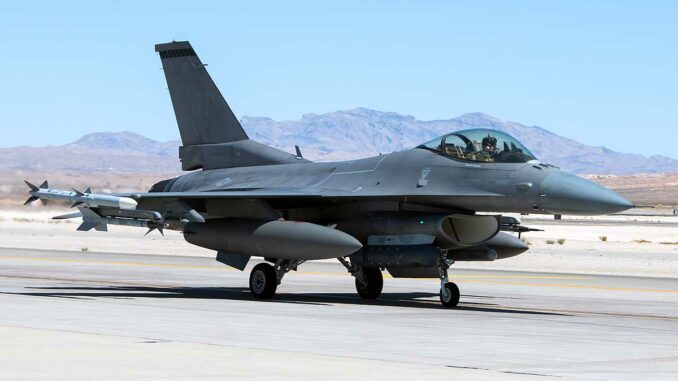
Complete comparison of the Mirage 2000 and F-16: performance, armament, cost, missions, avionics, and strategic issues to help you make an informed choice.
The Mirage 2000 and the F-16 Fighting Falcon are two iconic single-engine fighters designed by France and the United States, respectively, at the end of the Cold War. Both have been exported on a large scale, playing a crucial role in the air forces of several countries. This article aims to compare these two aircraft based on technical, operational, economic, and strategic criteria in order to highlight their respective specificities.
The comparison between these two aircraft is relevant because they embody two technological visions of the light multi-role fighter. Understanding their differences provides a better understanding of the industrial, tactical, and geopolitical issues surrounding their acquisition and use. With several countries needing to modernize their fleets, this analysis provides useful insight for military and industrial decision-makers.
General Overview of the Aircraft
History and Development
The Mirage 2000 was developed by Dassault Aviation to meet the needs of the French Air Force in the 1970s. It made its maiden flight in 1978 and entered service in 1984. The Mirage 2000 is based on a tailless delta wing design derived from the Mirage III, with an emphasis on speed, simplicity, and the ability to integrate modern systems.
The F-16 Fighting Falcon, designed by General Dynamics (now Lockheed Martin), first flew in 1974 and became operational in 1978. Born out of the USAF’s Lightweight Fighter program, it introduced a lightweight airframe, a high-visibility cockpit, and innovative electric flight controls.
Role and main missions
Both aircraft were designed for air superiority missions, but quickly evolved into multi-role fighters. The Mirage 2000 is available in several versions: interception (C), ground attack (D/N) and export (E). The F-16 is capable of performing interdiction, close air support, reconnaissance and even SEAD (Suppression of Enemy Air Defenses) missions, with more than 20 modernized versions.
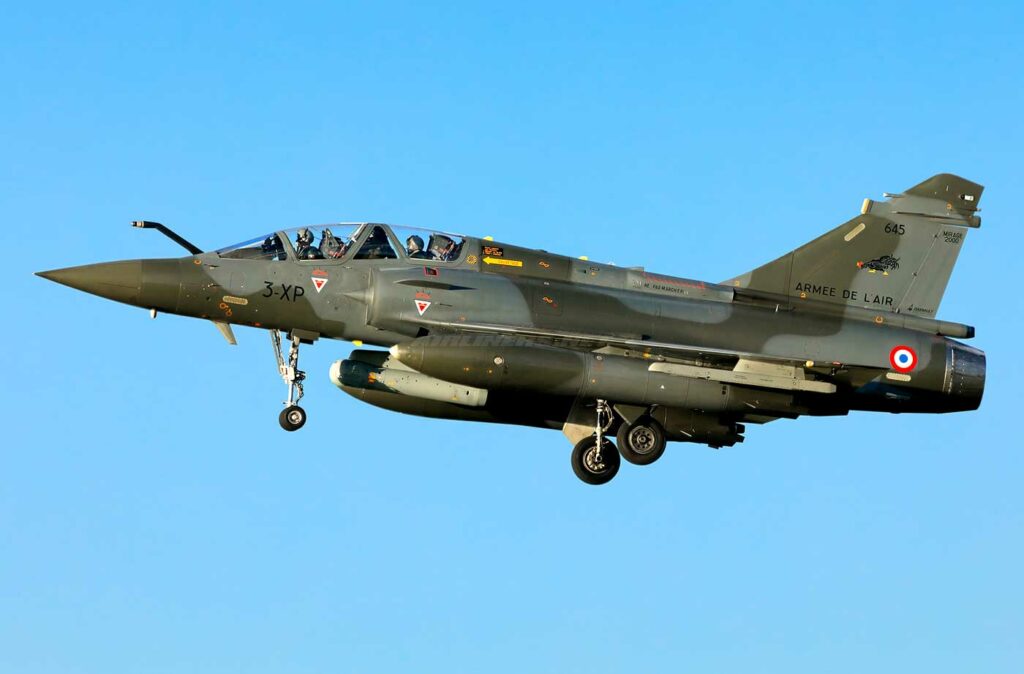
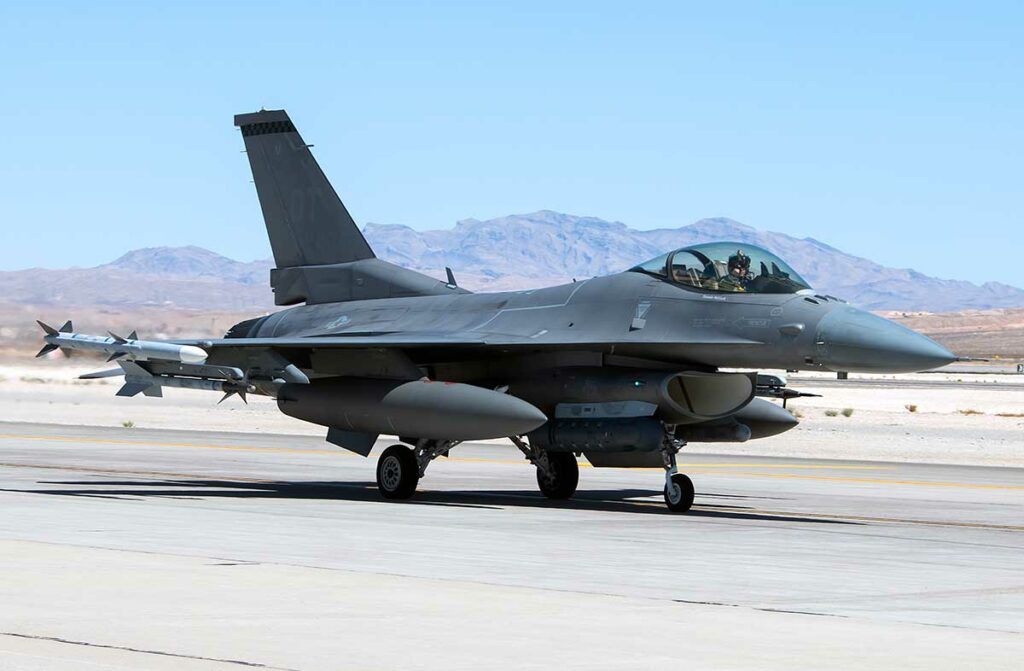
Technical Criteria
1. Physical Characteristics
| Parameter | Mirage 2000 | F-16 Fighting Falcon |
|---|---|---|
| Length | 14.36 m | 15.06 m |
| Wingspan | 9.13 m | 9.96 m |
| Height | 5.20 m | 4.88 m |
| Empty weight | 7,500 kg | 8,570 kg |
| Maximum takeoff weight | 17,000 kg | 19,200 kg |
| Payload | approx. 6,300 kg | up to 7,700 kg |
The F-16 has a slightly higher payload capacity, especially in attack configurations. The Mirage is more compact, which can be an advantage in restricted airspace.
2. Propulsion
The Mirage 2000 uses a Snecma M53-P2 engine (97.9 kN with afterburner), while the F-16 is powered by a General Electric F110-GE-129 or Pratt & Whitney F100-PW-229 (up to 131.7 kN).
The F-16 has a higher thrust-to-weight ratio, offering faster acceleration at the expense of higher fuel consumption.
3. Air performance
| Parameter | Mirage 2000 | F-16 |
|---|---|---|
| Max speed (altitude) | Mach 2.2 (2,336 km/h) | Mach 2.0 (2,120 km/h) |
| Range | ~1,550 km | ~1,700 km (without refueling) |
| Service ceiling | 18,000 m | 15,200 m |
| Climb rate | 285 m/s | 254 m/s |
| Load factor | +9 g | +9 g |
The Mirage 2000 achieves higher speeds and ceilings. The F-16 has a slightly longer range and excellent maneuverability at low altitudes.
4. Avionics and Electronic Systems
The Mirage 2000-5 and 2000-9 are equipped with RDY radar, capable of detecting and engaging multiple targets simultaneously. The F-16, in its recent versions (Block 50/52+ and 70/72), is equipped with AN/APG-83 AESA radar, which performs better in cluttered environments.
Both aircraft have tactical data links, laser designation pods (Litening, Damocles) and integrated electronic warfare systems, but the most modern versions of the F-16 (Viper) incorporate advanced network-centric capabilities.
5. Weapons Capabilities
Both platforms are equipped with:
- a 30 mm internal cannon (Mirage) or 20 mm (F-16),
- medium-range air-to-air missiles (MICA, AIM-120 AMRAAM),
- air-to-ground missiles (SCALP, AGM-65 Maverick),
- laser-guided bombs (GBU, AASM),
- nuclear capability (Mirage 2000N/2000D with ASMP-A, F-16 with B61 in NATO).
The F-16 has up to 11 hardpoints, compared to 9 for the Mirage, which improves its tactical modularity.
Mission Performance Criteria
1. Versatility
The F-16 is one of the most versatile aircraft in the world, used in a variety of roles, from air combat to enemy defense suppression. The Mirage 2000, although more specialized depending on the version, offers great modularity within the same airframe, especially with the -5 and -9 versions.
2. Survivability
Neither aircraft is stealthy, but the F-16 has a lower radar signature thanks to its more streamlined airframe. Both can carry jammers and decoys (chaff/flares). System redundancy is more advanced in the latest versions of the F-16.
3. Operational Capability
The F-16 benefits from highly developed global logistics, with a high availability rate (over 80% in some fleets). The Mirage 2000, which is more limited in number, depends on centralized Dassault support, which can affect availability depending on the user country.
Economic Criteria
1. Development Cost
The Mirage 2000 cost around €3.5 billion to develop. The F-16 program, which is older and more ambitious, exceeded $10 billion but benefited from considerable economies of scale.
2. Unit acquisition cost
- Mirage 2000-5: approximately 30 to 40 million euros depending on the version.
- F-16 Block 70: approximately 55 to 65 million US dollars (50 to 60 million euros).
3. Operating Cost
- Mirage 2000: between €12,000 and €18,000/hour.
- F-16: between €18,000 and €22,000/hour, depending on the block.
The service life of both aircraft exceeds 8,000 flight hours.
4. Overall economic impact
The F-16 supports production lines in several countries (United States, Turkey, South Korea). The Mirage 2000 has helped maintain Dassault’s capabilities and French industrial employment, but its production volume remains more limited.
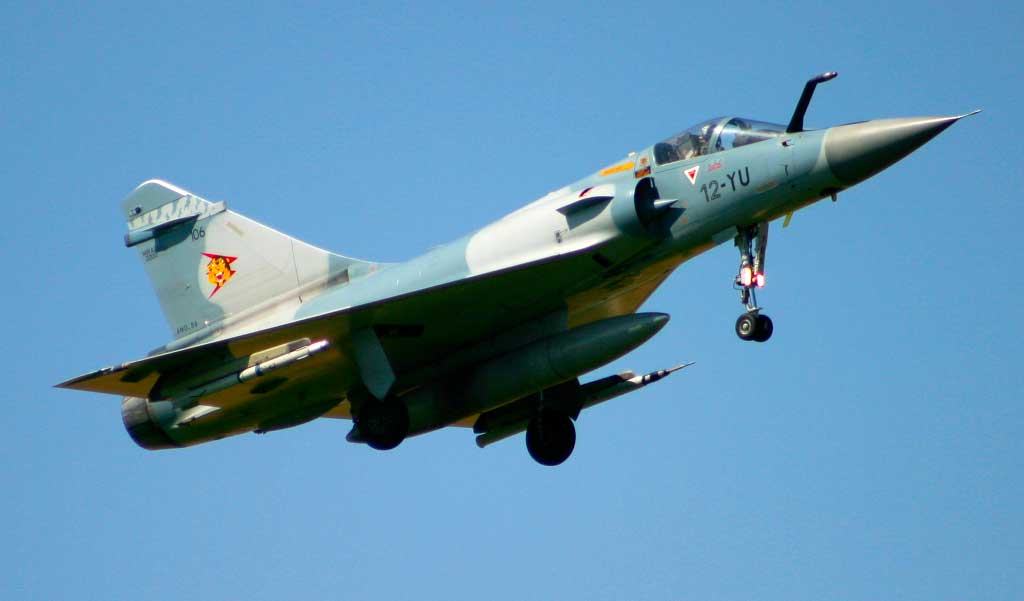
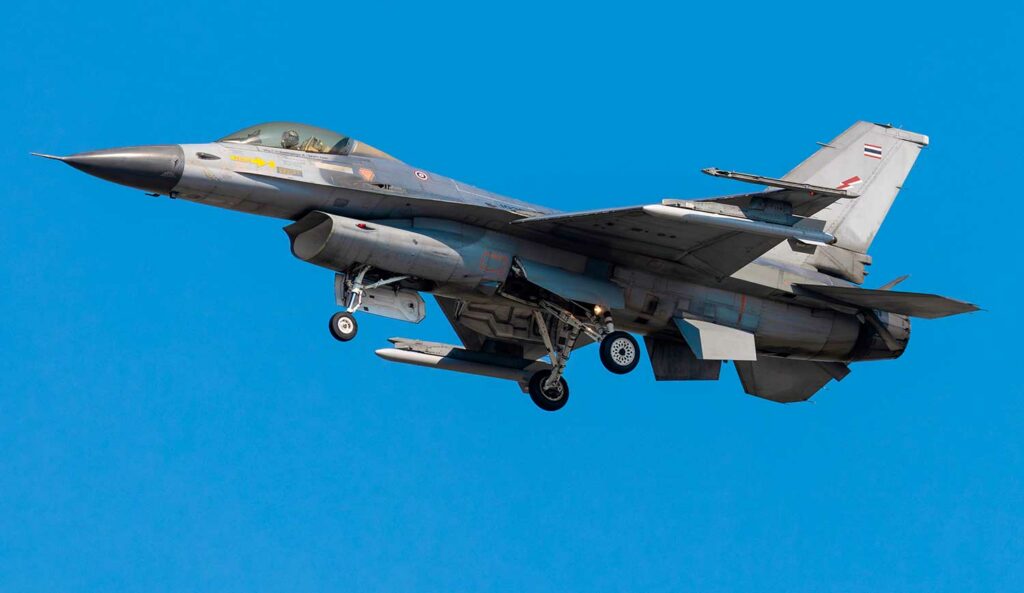
Strategic and Political Criteria
1. Geopolitical Alignment
The F-16 is used by more than 25 countries, many of which are NATO members or partners. The Mirage 2000 is mainly used by France, India, the United Arab Emirates, and Qatar, among others. The acquisition of one of these aircraft often reflects a strategic alignment choice.
2. Impact on Military Doctrine
The F-16 fits perfectly into doctrines centered on NATO interoperability. The Mirage 2000 has evolved to adapt to national doctrines, particularly in France and India, which value strategic autonomy.
3. Flexibility of Modernization
The Mirage 2000 is nearing the end of its modernization cycle, although some fleets have received major upgrades (2000I in India, 2000-9 in the UAE). The F-16, meanwhile, is still evolving towards the Block 70/72 Viper version, with AESA radar, a digital cockpit, and advanced network connectivity.
- Mirage 2000: agile, reliable aircraft, excellent at high altitudes, with solid air-to-air capabilities and a good weapons system, but limited in payload and NATO interoperability.
- F-16: a versatile, modern, upgradeable fighter with a global logistics network and high adaptability, but more expensive and more dependent on an external industrial base.
For an army seeking NATO integration and a sustainable multi-role platform, the F-16 Viper offers superior flexibility and support. The Mirage 2000, more suited to autonomous national doctrines, remains relevant for specific missions, especially in countries that already have Dassault infrastructure.
The F-16 continues to evolve, alongside the F-35, for countries that do not wish to take the leap to stealth fighters. The Mirage 2000, meanwhile, is nearing the end of its life cycle, with prospects focused on extending the life of existing fleets pending a potential replacement by the Rafale or other new-generation aircraft.
War Wings Daily is an independant magazine.